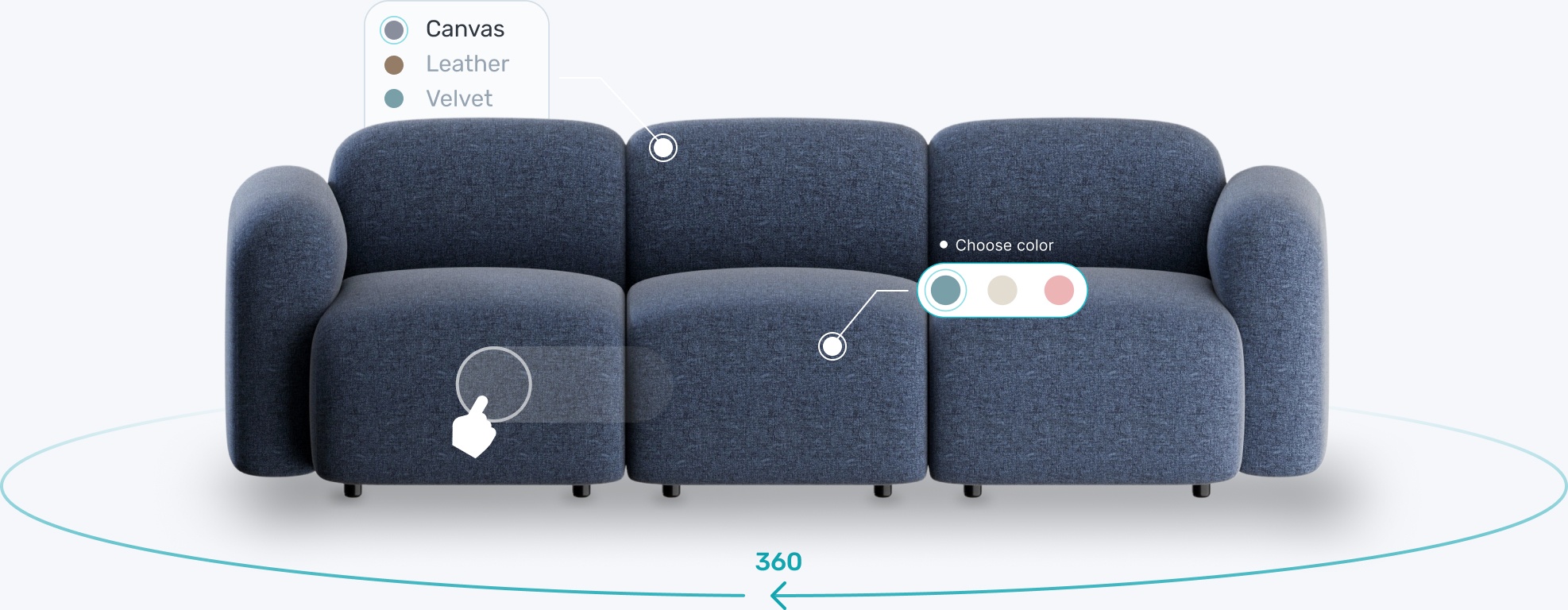Transform your eCommerce strategy with 3D & AR





AI is all the rage these days – but does it have the potential to automate 3D modeling, QA, and asset management processes?
At Modelry, we think Artificial Intelligence will not only play a part in improving internal processes and delivering a top-notch experience to our customers; it will quite literally change the game of 3D product visualization.
Need evidence? Read on to find out the key benefits and challenges of AI in 3D production.
AI helps to simplify (and in some cases eliminate) specific processes and save both time and manual effort for technical teams.
At Modelry, we focus on delivering top-notch 3D modeling services to our clients in eCommerce.
Whether we are working with giant corporations or smaller businesses, we follow the same workflow that includes turning our clients’ 2D photos into 3D images and conducting a rigorous Quality Assurance.
While our processes are designed for efficiency, we are constantly looking for ways to push the envelope and further develop our workflows.
Currently, we’re striving to improve the following fields with the help of AI:

To take 3D models and their creation to the next level, AI is indispensable. To see why let's quickly review what it takes to make a 3D model.
3D modeling is a process that consists of several stages, but some of them are more important than others:
Choosing the right texture is the step that takes a lot of time and effort from the designer. The designer has to either create a texture himself/herself or rely on online databases and search for the closest match.
At Modelry, we are currently working on solving this problem by creating algorithms that could save designers' time and provide them with the right texture automatically.
The solution involves several steps:
We are working on a comprehensive texture database with tens of thousands of textures that have been gathered from various sources (including public databases, our own created textures, and textures created by designers using our platform).
Creating algorithms to speed up our process without the loss of quality is one of our key priorities at the moment. However, we are also working on the roadmap for future improvements.
When it comes to the long-term goals regarding textures and AI, we opt to make the process even more efficient and use AI to generate such textures automatically from the product reference image.
Doing so would eventually help overcome the need to have an extensive texture database and make the whole 3D modeling creation process much faster and more convenient.

It’s only natural that our clients want a 3D model that is flawless and perfectly reflects their product. Establishing a rigorous QA process between the client and the designer is critical in achieving top quality and customer satisfaction. Once a new 3D model is ready for a feedback session (QA), it goes into an automated, checklist-driven approval workflow – the customer is guided through the quality assurance stage, and the designer receives clear, actionable feedback, all in one place.
However, the QA is quite a lengthy process, and we strive to make it shorter in the future.
AI can help to improve this process. Machine learning algorithms can learn to recognize a perfect 3D model and find any deviations or anomalies. With that in place, 3D model creators at Modelry could greatly improve the QA process’s quality and speed on our platform.
AI can help with the QA process by:
The latter aspect is by far the most intriguing. Achieving that would enable our team members to automatically apply small fixes without the designer’s need to intervene.
As a result, that would save time and prevent any human errors

As you can probably tell, the development of AI technologies is nearly unstoppable. And we expect it will contribute greatly to the 3D modeling process.
For example, recent developments in generative models have opened up a possibility to automatically generate 3D models from 2D images. Such a process is hugely beneficial for many e-commerce applications with thousands of products and 2D images.
What’s more, AI can also support the 3D development process by generating and suggesting the right textures for designers to use when creating a 3D model.
On top of that, AI can improve the QA process by automatically detecting and tagging the models where it deviates from its original image.
As Deep learning and computer vision advances, reconstructing high-quality 3D shapes from 2D images becomes more and more feasible.
By conducting R&D in this field, we are moving closer to an automatic 3D reconstruction.
Such a shift is beyond exciting, as it opens up a way for the clients to make tens of thousands of 3D models that would have huge demand in the market.
For instance, such technologies would greatly benefit e-commerce clients with huge product catalogs. They could offer a more interactive and engaging product presentation solution instead of the dull 2D product displays.

With the role of Artificial Intelligence in eCommerce increasing daily, we are shifting our focus on implementing the best AI practices and technologies into our workflow.
With AI technology, we’ll be able to:
We are currently implementing and testing the latest features, and our customers can expect to see the initial results in the near future.

CGTrader offers 3D modeling and Augmented Reality solutions and Digital Asset Management services to online retailers around the globe. We have over 15 years of experience in 3D modeling, and we strive to deliver top results at all times with our advanced workflow.
It has four main steps:




